“I am prepared to go anywhere, provided it be forward.” – David Livingstone
“I have never been lost, but I will admit to being confused for several weeks” – Daniel Boone
With over 100 billion star systems, containing 400 billion stars (since many star systems have more than one star), planets, moons, black holes, supernovas, and other astronomical phenomena, and uncountable planetary surfaces to explore (and all of this in a 1:1 scale representation), the Explorers of Elite: Dangerous have their work cut out for them.
Whether your motivation is gathering cartographic data to sell for profit, getting your Commander’s name in the Discovered By field for all to see, or simply reaching for the next horizon and taking in all the sights, Exploration can be a lonely but very rewarding profession; there can be danger at the end of every jump, but your only real enemy is space madness. Survive both and you can reap great rewards and accolades.
The Job
The Milky Way, in Elite: Dangerous, is a mostly procedurally generated, 1:1 recreation of our real galaxy. There are many, many curated worlds and systems, such as Sol, and the more than 160,000 stars and exoplanets that astronomers have discovered and cataloged are also faithfully represented. The physics by which the procedural portions of the galaxy are rendered are as close to real astrophysics as the developers could come, with considerations for gameplay and performance. That said, there are literally hundreds of billions of celestial bodies and anomalies that even the developers have never seen. Oh, they’re aware that, because of their simulation, these things are theoretically out there, but there are uncountable things that no human has ever laid eyes on in the playing field of Elite: Dangerous. The Explorer’s job is to see all the things.
Exploration can be conducted anywhere. Even within The Bubble, there are stars no one has seen, planets that no one has landed on, or scanned, canyons on planetary surfaces no one has explored. The opportunities for getting that Discovered By tag are much slimmer in The Bubble, but it’s possible. The real unknown, however, is in deep space, especially on the opposite side of the galaxy, many tens of thousands of lightyears from Sol.
Through the use of light exploration ships, with high end Frame Shift Drives, Discovery and Surface Scanners, and Scarab SRVs, the Explorer travels the inky black, seeing the sights and gathering valuable cartographic data. Those Explorers who choose to stay close to home, have plenty of opportunity for discovery while still being within reach of civilization, but those who choose to go where no one has gone before, need to be prepared to be truly on their own; folding space makes travel quicker between star systems, but the distances involved still mean that the deep space Explorer will be away from anything going on in human space (Powerplay, Community Goals, Wingmates, etc.) for days, weeks, or even months at a time.
The Ship
As mentioned above, the Explorer’s ship needs to be light and fitted with the best Frame Shift Drive the pilot can afford. This will allow the Explorer to make longer jumps between far flung systems. This also means that, in most cases, the other modules you’ll be outfitting will be D rated modules, as these are always the lightest (less mass means longer jumps). Additionally, apart from Discovery and Surface Scanners and a Scarab SRV, Explorers, especially those bound for deep space, would be well served by an Auto Field-Maintenance Unit and a Fuel Scoop. These two modules, more than any other, help to make the Explorer self sufficient and able to go long periods without visiting Starport Services.
Explorers operating in The Bubble should always seek to keep themselves safe, with good shields and countermeasures, and perhaps even fitted Hardpoints. Those Explorers operating in the deepest reaches of the Milky Way have little to worry from Pirates, but a good D rated Shield is still useful to protect from bumps and scrapes. Heat Sink Launchers also help, for close calls with Neutron Stars, White Dwarves, and Black Holes. Countermeasures should also be considered for the eventual, long trip home.
The Explorer’s biggest concern is any cartographic data they have gathered. While this data lives on the ship’s computer, and requires no cargo space, it is worthless until it is sold to a Universal Cartographics representative at most Outposts, Stations, and Installations in The Bubble. This data does not survive ship destruction, so some protection for the trip through The Bubble is recommended; there is no worse Exploration story than returning from a months long trip in the black, only to be Interdicted and destroyed by a Pirate before your can reach a station to sell the data.
The Explorer that keeps their ship light, well equipped, and reasonably well defended will have a much easier time doing the real work of Exploration: scanning all the things.
Doing the Work …
Before I go any further in describing the actual minute to minute work of the Explorer, I urge you to check out r/eliteexplorers. It is a great community of Explorers on Reddit offering tips, tricks, logs of their journeys, and even organizing community exploration events. They’ve been invaluable to me on my comparatively short forays into the deep dark (I’m, at the time of this writing, only ranked Ranger in Exploration), and I highly recommend the subreddit as a source for anyone looking to get into Exploration in Elite: Dangerous.
From here on I’ll mostly be describing how an Explorer makes a living (how to make Credits exploring the Milky Way), but everything I’ll be going over are things any Explorer, regardless of motivation, should hopefully find useful. I’ll readily admit that Exploration is not the best way to get rich, as far as Credits per Hour, but it is rewarding in a host of other ways.
The in-game Galaxy Map and System Map, accessed from the left hand HUD (default key binding 1) are the Explorer’s best tools. With these two Maps the Explorer can determine the class of stars, plot routes, see distances, find anomalies, and determine which celestial bodies are worthy of closer inspection. Plotting a course between stars, however, is an Explorer’s first hazardous undertaking. It should be noted that you’re going to need to familiarize yourself with navigating around the Galaxy Map. This is because the maximum distance you can plot a course is 1000ly. Although it is a few years old, the basics of navigating the Galaxy Map demonstrated in this tutorial are still sound. Give it a watch if you’re having trouble finding way points for long range Sightseeing missions. If you don’t want to play around with the Galaxy map, there is a tool to help plot very long courses (those in excess of 1000ly). By entering your source System, destination System, single jump range (preferably the “full tank” single jump range), and how far off course you want to deviate to use boosts from Neutron Stars into the Elite Dangerous Neutron Router, it will lay out a course for you in convenient check-list form. Just plot a course to each system on the list in turn, in the Galaxy Map, and eventually you’ll get there.
In an effort to remain light, thus extending jump range, most Exploration vessels are fitted with only the stock fuel tank. Obviously this won’t get you far without a Fuel Scoop, so it’s always good to be mindful of how much fuel you currently have, how much fuel the next jump will use up, and whether or not the star at the end of the jump is a main sequence star. To that end, pick one of these mnemonics and memorize it: FOG KBAM, KGB FOAM, or Oh, Be A Fine Guy/Girl, Kiss Me. They are the same mnemonics astronomers use to remember main sequence stars. In Elite: Dangerous, you can only scoop fuel, using a Fuel Scoop, from main sequence stars. In the Galaxy Map you can always see the Star Types for every star in a system, even if you’ve never visited it, though you may have to travel some distance in supercruise, if it’s a multi-star system, to scoop one.
A good habit to get into, when jumping to systems you haven’t visited before, is to throttle down to zero once your jump starts. This way, when you exit the jump, your ship will come to a stop. Sometimes, in multi-star systems, the stars are so close to each other that you can begin taking heat damage right away if you move from the jump in point. Neutron and White Dwarf stars are even more hazardous in this regard and don’t even get me started on Black Holes. Just remember, when jumping to unknown systems, once the countdown completes and you’re in Witch Space, throttle to zero. Once you’re safely in the new system, point away from the star and throttle up.
If you do manage to take enough damage to break one or more modules, and you’re nowhere near a station for repairs, you aren’t necessarily boned. Every ship in the game is equipped with a Reboot/Repair function, accessible from the right hand HUD (default key binding 4), under Functions. Reboot/Repair will only work in normal space and when at least one module has less than 5% health. When activated, Reboot/Repair shuts down the whole ship (including Life Support), and canibalizes healthy modules to repair the broken modules at a rate of 2:1 (2% health taken from healthy modules to repair 1% of a broken module). This sort of repair is usually enough to allow you to limp to the nearest starport for a proper repair. If you have an Auto Field-Maintenance Unit, the repair process is much easier. Simply select the module to be repaired from the Modules panel in the right hand HUD (default key binding 4) and select Repair. The Auto Field-Maintenance Unit will shut down that module, repair it using its stored materials, and then restart it. This is the preferred method for deep space Explorers. You can even Synthesize ammo to reload the Auto Field-Maintenance Unit by collecting the right materials from planetary surfaces. The only module that cannot be repaired by either of these two methods is the Power Plant. If your Power Plant reaches 0% health, it explodes, taking the ship with it.
Once you’re in the target system, you’ll want to activate your Discovery Scanner. This is referred to, by most players in Elite: Dangerous, as honking. If you’ve never used a Discovery Scanner, the first time you do you’ll understand why. The Discovery Scanner will, depending on its quality, either reveal celestial bodies and/or anomalies in the system up to a given range in the case of the Basic or Intermediate qualities, or the entire system in the case of the Advanced quality.
After you honk your Discovery Scanner, you’ll want to get a more detailed scan of the main star (the one you jumped in near), since you’re right next to it. Simply target the star and point your bow at it. You’re ship’s sensors and/or Detailed Surface Scanner will do the rest. Now you can open the System Map and look at any celestial bodies and/or anomalies that were revealed but the Discovery Scanner. Using CMDR Dubardo‘s Visual Guide to Exploration, you can then determine if any of them are worth traveling to in supercruise for a closer inspection with ship’s sensors and/or a Detailed Surface Scanner. Because so many of the planets look the same, though, CMDR Shellstrom has put together an excellent little tool to narrow it down even further.
ObjectScanner.Net is a visual and audio guide to the celestial bodies in planetary systems that are worth the most Credits when the data is sold to Universal Cartographics. And yes, you read right: visual and audio. You see, every celestial body in Elite: Dangerous has its own audio signature. ObjectScanner.Net net plays those signatures so that you can narrow down, among like appearing bodies, which are which. CMDR Akira Masakari has and even more in-depth guide on the official forums, including how best to hear these audio signatures in game. If you think this seems like a lot of time to spend narrowing down planets, believe me, it’s still less time than traveling to them in supercruise, only to discover it’s a worthless rock. And, I’ve seen systems that have 50-100 bodies to sort through.
Once you get within scanning distance of a planets, and scan them (with a Detailed Surface Scanner), you’ll also get a topographical map when you zoom in on them, by clicking on the Planetary Map button on the pop-up menu you get when mouse over a planet. This will allow you to see any interesting geological features that might be worth exploring with your Scarab SRV. The Detailed Surface Scanner also gives you detailed information about the mineral content of planetary crusts, giving you an idea of what Engineering and Synthesis materials might be found in outcrops on that planet.
If you decide to land on a particular planet, flying over the surface at an altitude of about 2km will reveal Points of Interest (POI), blue/violet circles on your radar that indicate interesting terrestrial anomalies to explore. Once on the surface, if you decide to land in a POI, you can use CMDR Shellstrom‘s WaveScanner.Net tool to track down any objects of interest. Objects in POIs have specific wave patterns and audio signals. WaveScanner.Net allows you to identify those signals so you can pick and choose what’s worth actually driving to. This is a good way to gather Engineering and Synthesis materials, since they don’t take up cargo space or add mass to your ship. If you happen to be on a planet in a nebula, you may also find Alien Structures, but you’ll need some Cargo Racks to haul back what can be found there.
Once you’re done exploring all that seems interesting to you it’s time to jump to the next system in the long line of systems between you and you’re eventual goal of the galactic core, far rim, or just the next horizon. If you’ve been out long enough, and it’s time to head home and sell all that data you’ve gathered, you’ll want to take care as you approach The Bubble. Pirates can and will Interdict you, once you’re back in inhabited space, so try to pick a system on the edge of The Bubble to minimize exposure. Selling data to Universal Cartographics does earn you rep with that station’s controlling local faction, and any Superpower they’re aligned with (along with raising your Explorer Rank with the Pilots Federation), so if that matters to you check the Galaxy and System maps for your target system to see who is in charge. If you get Interdicted along the way, throttle to zero to submit, then blow chaff and boost away. Once at the station, dock as quickly as possible and sell your data. If you’ve been out for a real long time, and have available friends, you might even consider taping one of them to Wing up and provide an escort. Heck, you can even contact the folks at Iridium Wing and ask for an escort.
… With the Right Tools
Getting the most valuable data and avoiding getting blown up when you try to sell it is all about the Exploration vessel you choose and how you outfit it. Whether you’re looking for parts unknown within The Bubble or have your sights set on the far reaches of the Milky Way, the ship you choose will also go along way toward making your journey a safe and successful one.
Short range Exploration, that is Exploration within The Bubble, can be accomplished in almost any ship that can fit a Discovery Scanner, a Detailed Surface Scanner, and a Scarab SRV. In fact, if you forgo the Detailed Surface Scanner (cutting slightly into your cartographic data profits), you can even do it in the starting Sidewinder with this build. If you check the build you’ll see that, where possible, almost every module is D rated, to conserve mass. It has an A rated Frame Shift Drive for the longest jumps possible, and Advanced Discovery Scanner and Scarab SRV for collecting data and Materials. Because you’re operating in The Bubble, you could forgo the Fuel Scoop for a Detailed Surface Scanner, since you’ll generally be within reach of places to refuel. Chaff and Point Defense are there to help fend off Pirates, but they could also be dumped to conserve mass. This ship isn’t ideal, of course, especially if you want to reach the outer edges of inhabited space.
A Cobra Mk III is a great short range Exploration vessel and with this build you could easily reach even the most far flung reaches of inhabited space, such as the Pleiades nebula where Alien Structures have been found. If you check the build you’ll see that it has everything an Explorer needs to maximize data collection and profits, and again, because you’ll be operating in The Bubble, you could forgo the Fuel Scoop, but you won’t be able to reach places like the Pleiades without it. You can really outfit almost any ship, following the techniques outlined in the above builds, to explore The Bubble, but if your goal is the deepest, darkest reaches of the Milky Way, you’re going to want an Asp Explorer.
The Asp Explorer is generally considered to be the ultimate in deep space Exploration vessels. It has more than enough compartments to fit anything you’d need to do the work and remain self-sufficient for an extended period. It also has, when properly outfitted, one of the longest jump ranges of any vessel currently in the game and it is also a medium size ship, so you can land anywhere. I currently use one for Exploration. You can check out my build here. You’ll see it has all the same tools the previous builds have and is built around the same ideas of mass conservation. Additionally, because it has more compartments, it’s fitted with and Auto Field-Maintenance Unit so I don’t have to cannibalize other systems for repairs, and Heat Sink Launchers for close calls with hot bodies (yeah, yeah). It even has Cargo Racks, in case I find something interesting that’s worth hauling back.
Really, though, you can outfit almost any ship for Exploration if you follow the guidelines for mass conservation and fit the right tools. There are many who conduct deep space Exploration in Anacondas, Imperial Clippers, and Cutters. I’ve even seen accounts of deep space exploration in Haulers; the sky’s the limit if you understand outfitting.
Wrapping it up
While Exploration may not be the most profitable profession, it certainly has the potential to be the most rewarding in terms of the amazing things you can see and the mind boggling realization of just how vast our galaxy really is. I hope this post helps you on your way to becoming an Explorer in Elite: Dangerous. There is a lot to see out in the black, things no one has yet seen. Will you make the next big discovery?
Tune in next week for my post on playing a Liner Pilot. Tourists want to see everything Explorers have found, and more, and the Liner Pilot is their ticket to wonder.
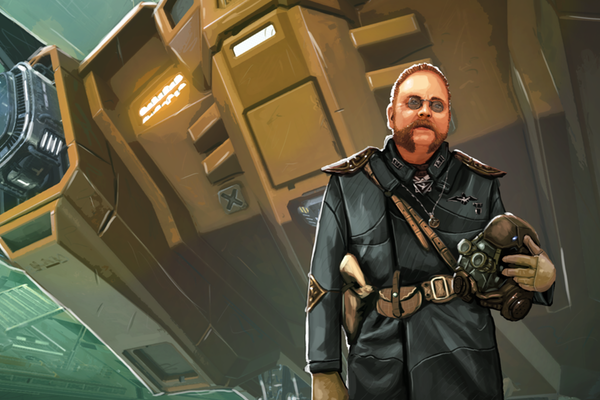
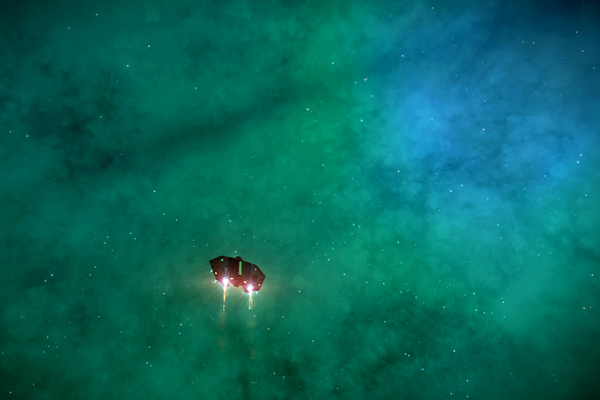
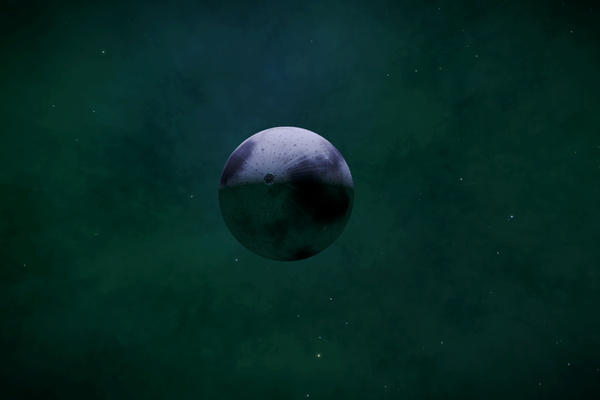
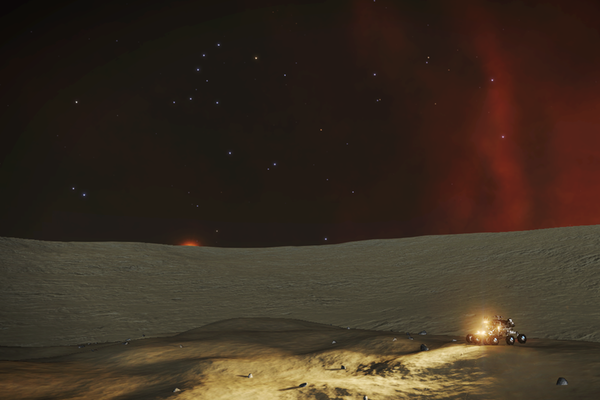
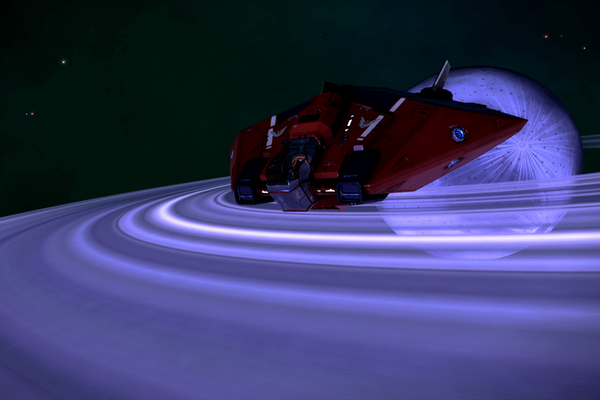
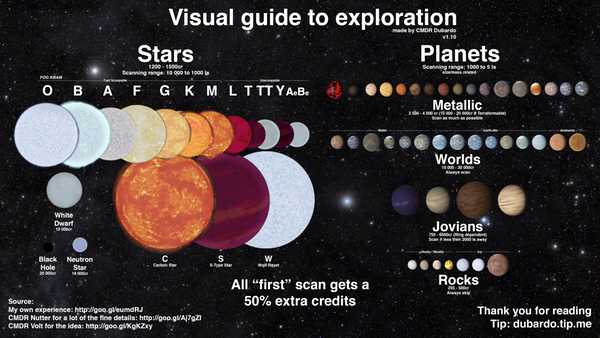
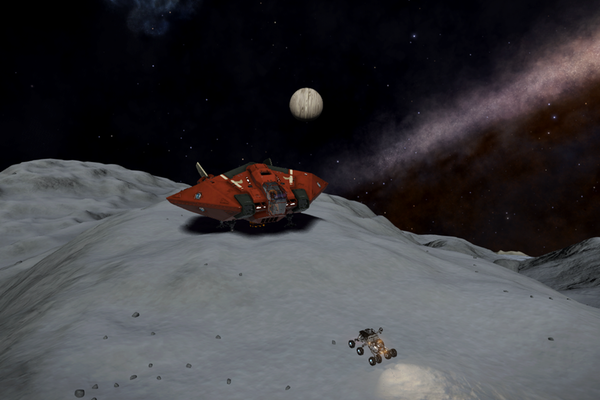
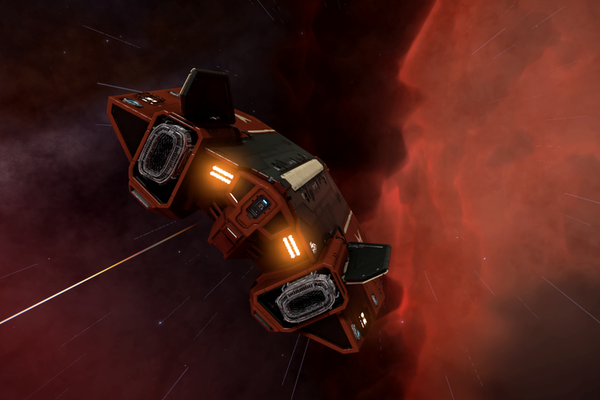
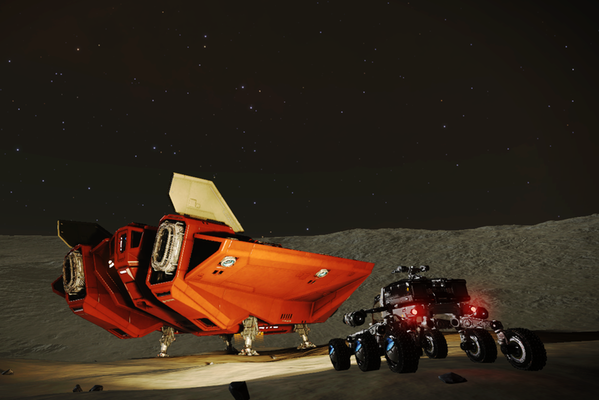
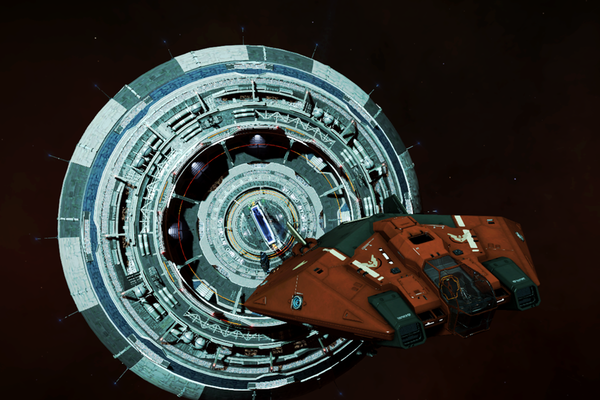
Excellent article on exploration. Thank you.
You’re welcome! Glad to be of service!